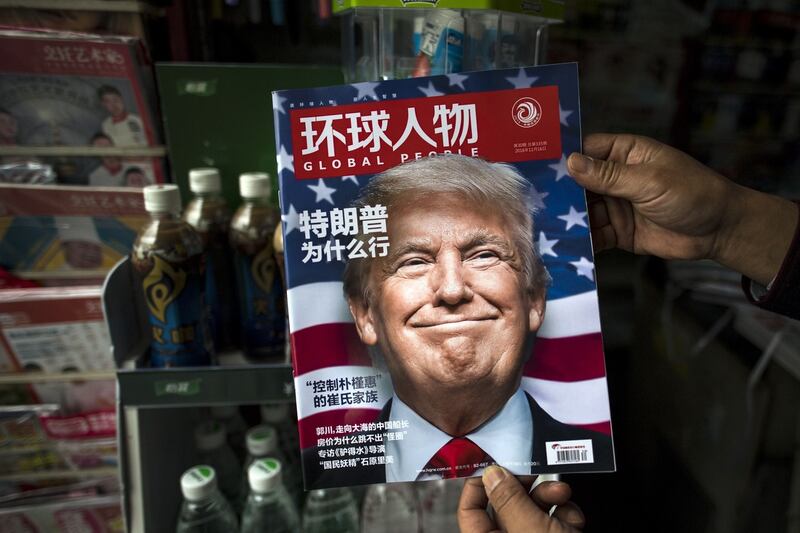Markets may have come too far, too fast in recent months, cautioned Morgan Stanley last week, suggesting investors take a “buy the election, sell the inauguration” approach.
Investors should ignore such advice. Timing is a tricky business but traders could be forgiven for thinking the odds of a pullback are rising. Just 3 per cent of S&P 500 stocks are oversold, according to Bespoke Investment Group data, the lowest percentage since July. Sentiment is heady; Investors’ Intelligence weekly survey of newsletter writers shows bullishness is at its highest level in more than two years, with similar readings on past occasions associated with near-term tops.
Still, a "bull market checklist" suggests any decline is not likely to be decisive, says technical analyst Jonathan Krinsky of MKM Partners. Market breadth remains very healthy, with a broad range of stocks continuing to exhibit strength. Momentum remains strong and indicators tracking the long-term market trend suggest the uptrend is accelerating rather than weakening.
There may be a near-term dip or pause, but the big picture indicates the “benefit of the doubt remains with the bulls”, says Krinsky.
‘Crazy’ 2016 was actually ‘amazingly normal’
Last year was a volatile one for stock markets – wasn’t it? Most commentary suggests 2016 was quite the rollercoaster. Stocks suffered their worst start to a year, then ripped higher; they plummeted following twin political earthquakes (Brexit, Trump), only to rip higher once more. Crazy, nerve-racking stuff, right?
In fact, it was "amazingly normal", says high-profile hedge fund manager Cliff Asness. Daily volatility was neither high nor low "compared to pretty much any prior period". The biggest monthly change in stocks occurred between mid-February and mid-March, when the S&P bounced 10.4 per cent. Relative to history, that is also utterly normal – neither low nor high.
What about looking at the year’s highs and lows? Between early February and mid-December, the S&P 500 soared 24.2 per cent; you could, admits Asness, have “made a killing”. But was that strange? No: 2016’s trading range was again very typical of prior periods.
“If you think 2016 was crazy,” Asness points out, “what are you going to do when something really crazy happens?”
Groupthink worsens on Wall Street
Groupthink appears to be an increasing problem among market strategists, judging by a Wall Street Journal piece last week analysing price forecasts from 15 prominent investment banks.
The S&P 500 will gain 5 per cent in 2017, according to the average forecast, and no one wants to stray far from that average. The gap between the highest and lowest forecast is just 9 per cent – the smallest gap on record.
Things were not always like this. The gap between the most and least optimistic strategists was 100 per cent in 2000 and 33 per cent in 2008. Since then, however, forecasts have become increasingly bunched, resulting in strategists’ outlooks becoming more homogenous than ever before.
There is safety in numbers. Whatever you say, say nothing.
Don’t bother looking for the next Amazon
Investors are forever fantasising about finding the next Amazon, which has returned an astonishing 38,000 per cent since going public in 1997. In reality, however, only a "sociopath" could have bagged those returns, cautions blogger and Ritholtz Wealth Management researcher Michael Batnick; the path to those mammoth returns "was filled with heartache, despair and nausea".
He’s not exaggerating. Amazon fell 15 per cent in just three days on 107 occasions; lost 6 per cent in a single day 199 times; fell into bear market territory (a fall of at least 20 per cent) in 16 of the last 20 years, with the average drawdown being 36 per cent; and fell 95 per cent during the dotcom bust.
“Sticking to a boring 60/40 portfolio is hard enough,” says Batnick, but Amazon? The fantasy of the 38,000 per cent return is just that: a fantasy.
Beware ‘red Ferrari syndrome’
If a hedge fund manager is driving around town in a sports car, is that a sign he’s making a bundle for his investors? Or is he just a flash git?
The latter is more likely, judging by a recent study investigating the cars driven by 1,144 hedge fund managers over a 22-year period. The paper, Sensation Seeking, Sports Cars and Hedge Funds, found sports car drivers took on more investment risk, subjecting investors to noticeably more volatility. Similarly, drivers of cars with high horsepower took more risk than those who drove "practical but unexciting" cars (minivan drivers are especially cautious).
High risk didn’t lead to higher returns, however. Additionally, performance car owners were more likely to terminate their funds, more likely to “succumb to overconfidence” and more likely to engage in fraud.
Why? Driving a sports car “conveys the intent to drive in a spirited fashion”, indicating “an inclination for sensation seeking” – a trait sometimes associated with substance abuse and criminal behaviour.
In other words, watch out for “red Ferrari syndrome” and invest with the minivan driver.















